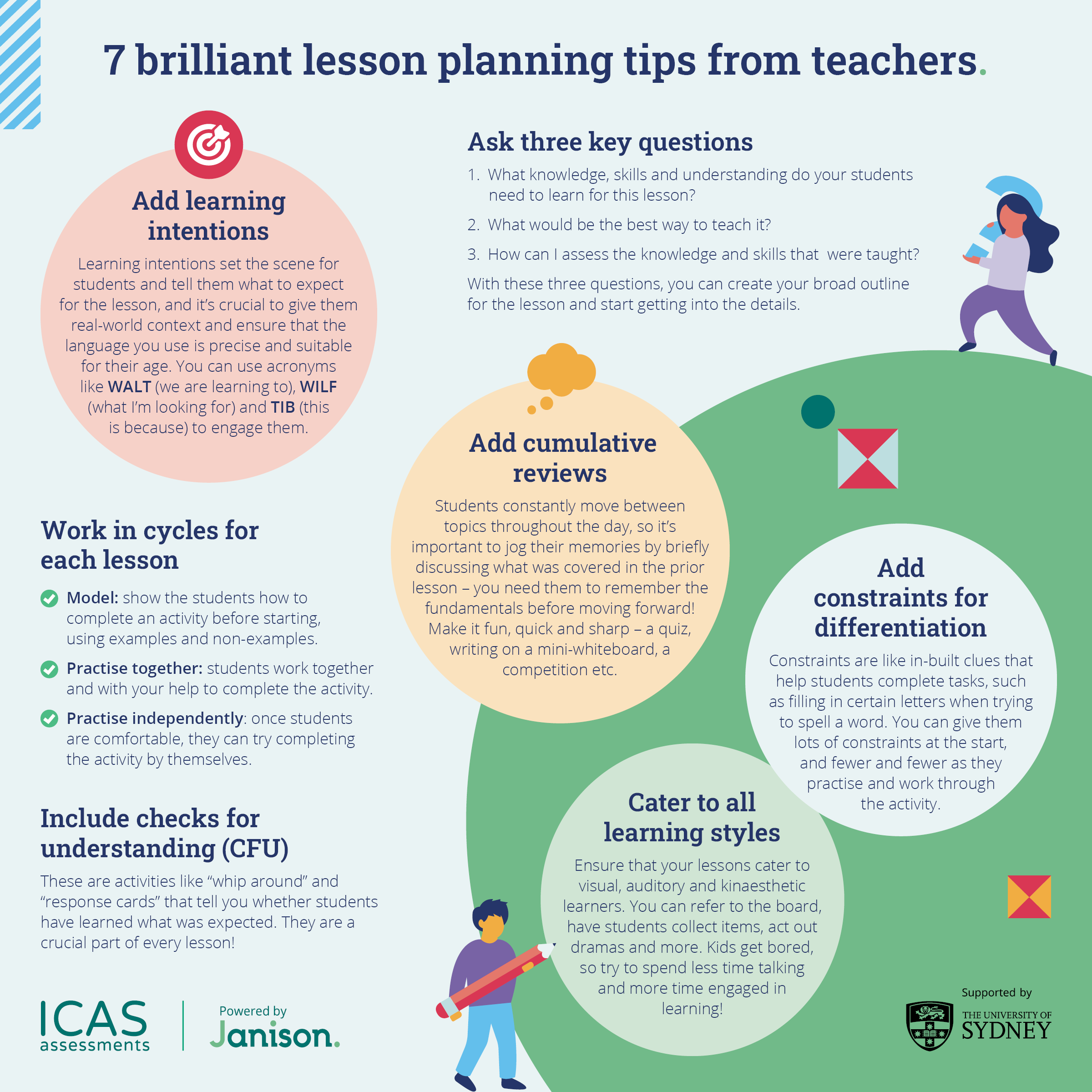7 brilliant lesson planning tips from teachers (infographic)

Lesson planning is one of the most important regular tasks you’ll complete as a teacher, and it’s incredibly time-consuming.
We asked our former teachers (with decades of collective experience) for their biggest lesson planning tips – the things that helped them to speed up the process while ensuring that their students were achieving their key learning outcomes.
Here they are! We recommend saving the image and referring to it when you need 🙂

1. Ask three key questions
- What knowledge, skills and understanding do your students need to learn for this lesson?
- What would be the best way to teach it?
- How can I assess the knowledge and skills that were taught?
With these three questions, you can create your broad outline for the lesson and start getting into the details.
2. Add learning intentions
Learning intentions set the scene for students and tell them what to expect for the lesson, and it’s crucial to give them real-world context and ensure that the language you use is precise and suitable for their age. You can use acronyms like WALT (we are learning to), WILF (what I’m looking for) and TIB (this is because) to engage them.
3. Add cumulative reviews
Students constantly move between topics throughout the day, so it’s important to jog their memories by briefly discussing what was covered in the prior lesson – you need them to remember the fundamentals before moving forward! Make it fun, quick and sharp – a quiz, writing on a mini-whiteboard, a competition etc.
4. Work in cycles for each lesson
- Model: show the students how to complete an activity before starting, using examples and non-examples.
- Practise together: students work together and with your help to complete the activity.
- Practise independently: once students are comfortable, they can try completing the activity by themselves.
5. Add constraints for differentiation
Constraints are like in-built clues that help students complete tasks, such as filling in certain letters when trying to spell a word. You can give them lots of constraints at the start, and fewer and fewer as they practise and work through the activity.
6. Cater to all learning styles
Ensure that your lessons cater to visual, auditory and kinaesthetic learners. You can refer to the board, have students collect items, act out dramas and more. Kids get bored, so try to spend less time talking and more time engaged in learning!
7. Include checks for understanding (CFU)
These are activities like “whip around” and “response cards” that tell you whether students have learned what was expected. They are a crucial part of every lesson!
Tag:lesson planning, teaching



